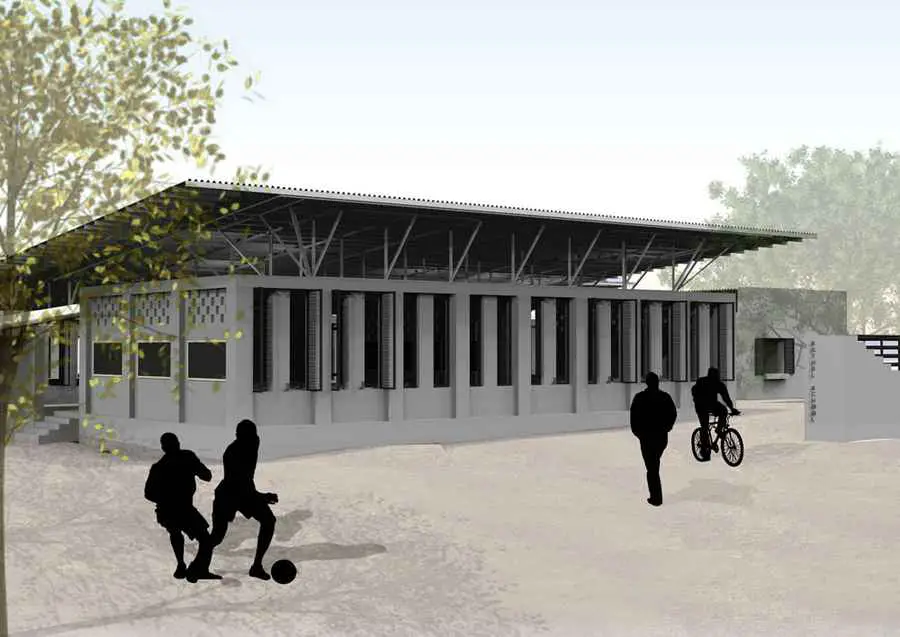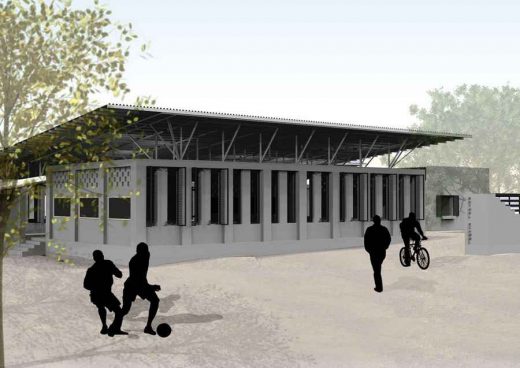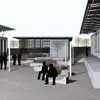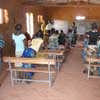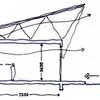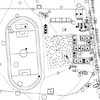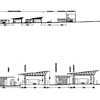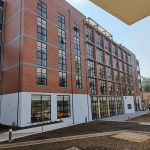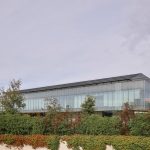Burkina Faso school buildings, Article 25 Africa project news, AEAD secondary design
Burkina Faso Secondary Schools
African Education Architecture: Article 25 Development Africa – New Buildings.
1 Nov 2011
‘Article 25: the built environment’s charity’
![]()
Monthly Report by Article 25 – written for www.e-architect.com
Article 25 Project Update : Secondary Schools in Burkina Faso, West Africa
Author: Jemma Houston, Article 25 Project Architect
Burkina Faso Secondary Schools in Africa
This month we submitted our Stage D design report for a Prototype School building in Burkina Faso to our local partner AEAD. Burkina Faso is one of the least developed countries in the world, with the UN Development Program Report ranking the country as having the lowest level of literacy in the world.
Education in Burkina Faso is woefully inadequate and, as with much of the rest of the region, is characterised by severe overcrowding, extremely poor learning conditions, and increasing demand. The prototype is the first of twenty schools planned for the region over the next twenty years and is intended to act as a replicable model designed to help improve standards of education in the country.
Key Design Principles
The design of the school seeks to achieve a sustainable and cost effective construction through the use of simple building techniques whilst incorporating traditional building methods and engaging local communities. The design will also make use of locally available materials to provide optimum internal climatic conditions.
The Prototype school will include the construction of 8 new classrooms, in addition to the 8 classrooms that exist at the current facility – the Bethel School in Gourcy. The existing 2 storey classroom block typifies schools in the region with their poor and overcrowded learning environments. The problem of extremely high occupancy rates – which can be as high as 100 students per classroom – is compounded by temperatures that can exceed 40 degrees as well as extremely poor day lighting.
New classrooms will be orientated east west through a linear block and will be located alongside a naturally shaded tree lined avenue. The three separate blocks consisting of 8 classrooms create a series of external courtyards, covered informal lecture spaces, and self study and play areas. Adjacent to these spaces, the study area and seminar facilities engage and merge with the existing landscaped plantation.
Classroom Design Strategy
Classroom blocks will incoporate an oversailing ‘fly roof’ approach designed to provide external surfaces with shading from direct solar gain. The fly roof system allows air to cross ventilate through a series of trusses while the roof underneath acts as an insulating buffer to shield the internal classroom from heat build up and transfer.
The roof was designed as a response to a series of practical considerations: the fly roof will be constructed from corrugated metal on steel purlins which will act as the primary rainscreen, and this in turn is supported and tied down by a system of trusses; also steel angles welded to rebars create a lightweight and easily fabricated approach. Transporting large prefabricated roof trusses to the site is not possible and lifting machinery is neither economically viable nor readily available. However, on site skills training is a viable alternative.
The insulating buffer construction is made up of sand bags/ tarpaulins. The sand provides additional thermal mass, sealed with a concrete topping, and will be suspended from roof trusses, being allowed to naturally sag. Onsite Mock-ups of this will be produced prior to final selection of the most efficient buffer.
The design is heavily reliant on the use of locally sourced laterite stone (the quarry being located 5km from the Bethel School site) and their high thermal mass. Laterites are formed from the leaching of parent rock, which leaves the most insoluble ions, predominantly iron and aluminium. An essential feature for the formation of laterite is the repetition of wet and dry seasons.
Laterite block density 1,500 to 1,500kg/m3 is comparable to medium density concrete block. Blocks are hand dug from the ground and later hand dressed to required specification with machinery being unavailable due to hire costs. The laterite stone gives a warm red/brown natural aesthetic, a material used throughout the local community and something which we wish to continue in a traditional load-bearing structure.
East/West gable walls incorporate a trombe wall approach and direct solar gain on gable walls are absorbed by laterite and conducted slowly into the cavity airspace. Absorbed heat is subject to air convection within the cavity before the internal laterite skin becomes penetrated and this prevents heat being expelled into the classroom environment.
Classroom window openings are locally-manufactured, adjustable and fully openable louvered shutters. These enable ventilation and daylight to be controlled to suit the environmental conditions at various times of the day. Classrooms are achieving a daylight factor of 3%. Internal temperature gains are equivalent to external air temperatures, whilst having a maximum of 70 students per classroom.
Library and Seminar facilities
Library, seminar and reception facilities stand as separate entities from the main classroom learning environment and act to enclose courtyard spaces within a vast site. The construction of these facilities is based on a similar classroom structural grid in order to maintain a consistent build approach. Furthermore, a system of planted metal trellis screens will be incorporated to maximise ventilation and daylight.
Classrooms and Courtyard View:
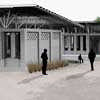
People involved in the construction of this project will all be native to the village of Gourcy and the skills acquired from the building of this project will be easily applied to further construction projects throughout the region.
The project aims to provide the local community with a new learning environment in order to provide essential skills. It is also directed towards boosting the capacity of the community to sustain itself through their engagement and involvement in the construction process. Ultimately, the prototype in Gourcy is designed to act as a prototype with which to improve learning environments elsewhere in Burkina Faso.
Our Stage D report has now gone to planning in Burkina Faso and we are working toward Stage E based on the design principles outlined in this article. In additional our UK charity partner, Giving Africa successfully completed a climb to the summit of Mount Kilimanjaro this month and raised enough money to fund the first phase of construction which is due to commence in early 2012. This first phase of construction consists of 5 classrooms, reception/seminar space, male /female segregated latrines and handwashing facilities.
Giving Africa is also hosting a charity Bond Ball on 11th November in support of this project. To learn more please visit our partner organisation website, Giving Africa.
Burkina Faso Secondary Schools images / information from Article 25
‘Article 25: the built environment’s charity’
Monthly Report by Article 25
Written for www.e-architect.com
21 Jun 2011
Secondary Schools in Burkina Faso
Article 25 Project Update : Secondary Schools in Burkina Faso, West Africa
Burkina Faso is one of the poorest countries in the world, ranked 161 of 169 on the UN’s Human Development Index (2009). It has one of the lowest gross enrolment rates in post-primary education in Africa, with over 1.8 million children of secondary school age not in formal education. About 10% of all children have places at secondary school and adult literacy for women is about 8%.
Article 25 is working with UK charity Giving Africa and local partner AEAD to design and oversee construction of twenty new schools over the next twenty years in Burkina Faso. These school buildings will enable AEAD to provide education and skills training as a route out of poverty for Burkina Faso’s next generation.
Prototype School for AEAD, Burkina Faso
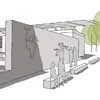
Local partner AEAD runs several primary schools in Burkina Faso as well as a successful and extensive programme of Speed Schools in the rural Zondoma region. Speed schools are designed to enable students who have failed to enrol in primary education to access the education system and prepare them for entry to secondary school.
AEAD also runs a number of secondary schools, but the need for secondary school places far outweighs availability both in this region and across Burkina Faso. Most existing schools within the country offer poor and over-crowded learning environments, often subjecting students to extreme classroom conditions. In these classrooms, daylighting is generally poor, occupancy can be up to twice the level recommended by UK standards, and temperatures can exceed 40 degrees C during afternoon lessons. There is frequently a lack of basic sanitary and hygiene facilities at the schools.
Article 25 in partnership with Max Fordham Consulting Engineers is designing a prototype secondary school in Gourcy which will offer an environment that is child friendly and conducive to learning. The classroom environmental design strategy combines high thermal mass construction, using locally available laterite stone from nearby quarries, with locally-manufactured adjustable and fully openable louvered shutters enabling ventilation and daylight to be controlled to suit the environmental conditions.
An oversailing ‘fly roof’ maintains shade on the external surfaces of the classrooms and adjoining circulation routes, thereby limiting solar gain during peak hours of the day. The buildings are orientated to benefit from the cooling effect of airflow passing through an adjacent avenue of mature evergreen trees to the east side and a recently established tree plantation to the west.
The new facilities at AEAD’s school in Gourcy will give 500 students the opportunity to undertake both formal classroom learning and vocational skills training in order to equip individuals not only with academic qualifications but also with practical ‘skills for life’. Training in metalwork, carpentry, agriculture, tailoring, hairdressing and other local trades facilitates vital income-generating opportunities for the students, and dedicated spaces for hands-on practical learning are integral to the design.
Entrance Courtyard, Prototype School Design
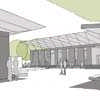
Dedicated areas for student-led self-study and group working will also be provided within the school campus. External seating areas, shaded from Burkina Faso’s aggressively hot environment, are arranged around blackboards allowing this already established culture of self-motivated learning to take place.
Self Study, Government School, Gourcy. 2010
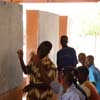
These informal external gathering spaces foster development of maturity and social skills in students. This empowers individuals to grow in confidence and believe in their abilities to lead within their communities with the skills which their education has provided. Each student educated in this way can find employment or start a business, and lift another 12 people from poverty. This is a vital part of a development cycle which can improve all aspects of life including health, mortality, environmental sustainability, socio economic position and equality.
Primary School Children, Niessega. 2010
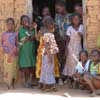
Websites: www.article-25.org + www.givingafrica.org
Prototype School Site Section
13 Nov 2012
Construction starts on prototype school in Burkina Faso, West Africa
Author: Martin Spring
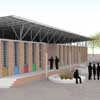
Burkina Faso Schools
After a delay of a year and a half, construction will at last start this month on a £170,000 school extension in Burkina Faso, West Africa. The new extension is the brainchild of the UK’s build environment charity, Article 25, which intends it as a prototype for new school buildings to be unrolled across the country.
Location: Burkina Faso, Africa
African Architecture
Contemporary Architecture in Africa
Burkina Faso School Building images © Article 25
Monthly Reports by Article 25 – Selection
Design: Cosmos Architecture, of CosmosIvicsa
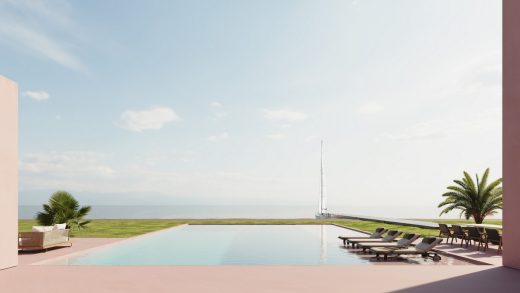
images courtesy of architects practice
Langue de Barbarie resort
Comments / photos for the Burkina Faso School Architecture page welcome

